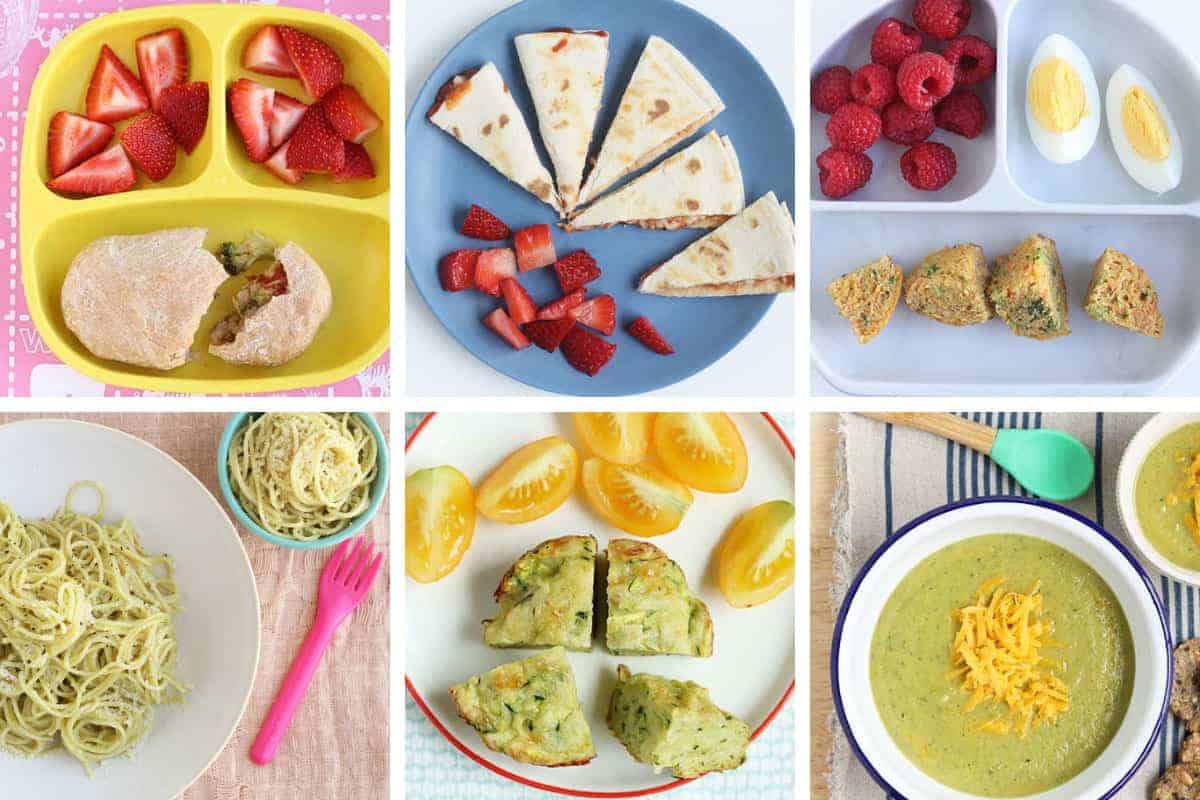Conquering the challenge of feeding picky eaters just got easier! This guide unveils a vibrant world of delicious, plant-based meals designed to tempt even the most discerning palates. Forget bland, boring vegan food; prepare to discover creative recipes that cleverly incorporate familiar flavors and textures, making the transition to a vegan lifestyle a joyful experience for everyone, even the fussiest eaters. We’ll explore simple recipes, sneaky ingredient swaps, and visually appealing presentations that transform mealtime from a battleground into a celebration.
From cleverly disguised vegan versions of childhood favorites like mac and cheese to exciting new dishes that showcase the versatility of plant-based ingredients, this guide provides a comprehensive toolkit for parents, caregivers, and anyone seeking to introduce more vegan options into their lives. We’ll cover everything from quick weeknight meals to more elaborate weekend creations, all while focusing on ease of preparation and maximum deliciousness.
Adapting Classic Dishes for Vegan Picky Eaters

Successfully transitioning picky eaters to a vegan diet often involves cleverly recreating familiar favorites. By maintaining the textures and flavors they love, while subtly introducing plant-based alternatives, you can make the transition smoother and more enjoyable for everyone. This involves thoughtful ingredient substitutions and creative cooking techniques.
Vegan Mac and Cheese
This creamy, cheesy delight is a staple comfort food, easily adapted for a vegan audience. The key is finding a vegan cheese sauce that delivers a rich, satisfying texture and flavor profile similar to traditional mac and cheese.
This recipe utilizes a cashew-based cheese sauce for its creamy texture and ability to melt beautifully. The addition of nutritional yeast provides a cheesy, nutty flavor that mimics the taste of traditional cheese.
- Ingredients: 1 cup raw cashews (soaked in hot water for at least 30 minutes), 1 cup nutritional yeast, 1/2 cup water, 2 tablespoons lemon juice, 1 tablespoon Dijon mustard, 1 teaspoon garlic powder, salt and pepper to taste, 1 pound elbow macaroni.
- Instructions:
- Cook macaroni according to package directions.
- Drain cashews and blend them with remaining ingredients (except macaroni) until completely smooth and creamy. A high-speed blender is recommended for optimal creaminess.
- Pour the cashew cheese sauce over the cooked macaroni and stir to coat evenly.
- Serve immediately or bake in a preheated oven at 350°F (175°C) for 15-20 minutes for a bubbly, golden-brown top.
Potential Challenges and Solutions: Some picky eaters may be hesitant about the texture of the cashew cheese sauce. To address this, ensure the sauce is perfectly smooth by blending it thoroughly. If the texture is still a concern, you could thin it slightly with more water or plant-based milk. The flavor can be adjusted to taste by adding more nutritional yeast for a stronger cheesy flavor or more lemon juice for tanginess.
Vegan Burgers
Replicating the satisfying “meatiness” of a burger is crucial for success. This recipe utilizes a blend of lentils and vegetables to create a hearty, flavorful patty.
The combination of lentils, vegetables, and breadcrumbs provides a binding agent that holds the patties together well. The addition of spices helps to mimic the savory flavor profile of a traditional beef burger.
- Ingredients: 1 cup cooked brown or green lentils, 1/2 cup finely chopped onion, 1/2 cup finely chopped carrots, 1/4 cup breadcrumbs, 1 tablespoon soy sauce or tamari, 1 teaspoon smoked paprika, 1/2 teaspoon garlic powder, salt and pepper to taste, burger buns, your favorite toppings.
- Instructions:
- Combine all ingredients except burger buns and toppings in a large bowl and mix well.
- Form the mixture into patties, about 1/2 inch thick.
- Cook the patties in a lightly oiled skillet over medium heat for about 5-7 minutes per side, or until heated through and slightly browned.
- Serve on burger buns with your favorite toppings.
Potential Challenges and Solutions: The biggest challenge with vegan burgers is achieving a good texture. If the patties fall apart easily, add more breadcrumbs or cook them gently to prevent breakage. Adjusting the seasoning is key; adding a touch of liquid smoke can enhance the savory, “meaty” flavor.
Vegan Pizza
The magic of vegan pizza lies in the crust and the cheese. This recipe offers a simple yet delicious approach.
Using store-bought vegan cheese simplifies the process, allowing you to focus on creating a flavorful pizza. A simple tomato sauce and your child’s favorite toppings will complete this classic dish.
- Ingredients: 1 pre-made vegan pizza crust, 1 jar of your favorite tomato sauce, 1 package of vegan mozzarella shreds, your child’s favorite pizza toppings (vegetables, vegan pepperoni, etc.).
- Instructions:
- Preheat oven according to crust package instructions.
- Spread tomato sauce evenly over the pizza crust.
- Sprinkle vegan mozzarella shreds over the sauce.
- Add your choice of toppings.
- Bake according to crust package instructions, or until cheese is melted and bubbly.
Potential Challenges and Solutions: The biggest challenge with vegan pizza is finding a vegan cheese that melts well and tastes good. Experiment with different brands to find a preferred one. If the crust is too dry, brush it lightly with olive oil before adding toppings. Involving picky eaters in choosing toppings can increase their acceptance of the meal.
Sneaky Vegan Meals for Picky Eaters
Transforming everyday meals into delicious vegan options without sacrificing flavor or texture is achievable with a few clever culinary tricks. These recipes utilize the power of spices, herbs, and creative substitutions to subtly incorporate vegan ingredients, ensuring even the most discerning palates remain happily unaware. The key lies in building layers of flavor that overshadow any potential “vegan” taste, creating dishes that are both satisfying and surprisingly plant-based.
Creamy Tomato Pasta
This recipe uses silken tofu to create a rich and creamy tomato sauce, perfectly mimicking the texture of traditional cream-based pasta sauces. The vibrant flavors of sun-dried tomatoes and basil effectively mask any hint of tofu.
- Sauté 1 diced onion and 2 cloves of minced garlic in olive oil until softened.
- Add a 14.5-ounce can of diced tomatoes, 1/2 cup of sun-dried tomatoes (oil-packed, drained), and 1/2 cup of vegetable broth. Simmer for 15 minutes.
- Blend in a high-speed blender until smooth. Add 1/2 cup of silken tofu and blend again until completely incorporated and creamy. The tofu adds a luxurious creaminess without a discernible tofu flavor.
- Season generously with dried basil, oregano, salt, and pepper. The herbs add depth and complexity, further obscuring any potential “vegan” note.
- Toss with your favorite pasta and garnish with fresh basil leaves.
“Chicken” Nuggets
These nuggets utilize a clever combination of chickpeas and breadcrumbs to create a satisfyingly crunchy and flavorful alternative to traditional chicken nuggets. The use of herbs and spices creates a robust flavor profile, masking the chickpea base entirely.
- Mash one can of chickpeas with a fork until mostly smooth, but still slightly chunky. This texture mimics the interior of a chicken nugget.
- Combine the mashed chickpeas with 1/2 cup of breadcrumbs, 1/4 cup of nutritional yeast (for a cheesy flavor), 1 teaspoon of garlic powder, 1/2 teaspoon of onion powder, 1/4 teaspoon of paprika, and salt and pepper to taste. The spices provide a savory and familiar flavor profile, akin to traditional chicken nuggets.
- Form the mixture into nugget shapes.
- Coat the nuggets in additional breadcrumbs and pan-fry in olive oil until golden brown and crispy. The double breading ensures a satisfying crunch, further distracting from the chickpea base.
- Serve with your favorite dipping sauce.
“Beef” Chili
This hearty chili uses lentils and mushrooms to create a rich and meaty texture, reminiscent of traditional beef chili. The smoky spices and bold flavors effectively camouflage the plant-based ingredients.
- Sauté 1 diced onion, 2 cloves of minced garlic, and 1 bell pepper in olive oil until softened.
- Add 1 cup of brown or green lentils, 1 cup of chopped mushrooms (cremini or portobello work well), 1 (28-ounce) can of crushed tomatoes, 1 (15-ounce) can of kidney beans, and 1 cup of vegetable broth. The mushrooms add a meaty texture and umami flavor.
- Simmer for at least 30 minutes, or until the lentils are tender. The long simmering time allows the flavors to meld and deepen.
- Season generously with chili powder, cumin, smoked paprika, oregano, and cayenne pepper (optional, for heat). The blend of spices creates a complex and satisfying chili flavor profile, reminiscent of traditional beef chili.
- Serve with your favorite toppings, such as shredded vegan cheese or sour cream.
Fun & Engaging Vegan Meal Presentation for Picky Eaters
Creative food presentation is a powerful tool for encouraging picky eaters to try new foods, especially vegan options which can sometimes seem unfamiliar or unappealing. By transforming simple vegan meals into visually stunning creations, we can bypass ingrained biases and stimulate a child’s natural curiosity about food. The vibrant colors, interesting shapes, and playful arrangements all contribute to a more positive and enjoyable dining experience.
The Psychological Impact of Appealing Food Presentation
Attractive food presentation significantly impacts a picky eater’s willingness to try a new dish. The visual appeal triggers a positive emotional response, making the food seem more desirable and less intimidating. This positive association can override pre-existing negative perceptions or anxieties about unfamiliar flavors or textures. A beautifully presented meal stimulates the appetite and invites exploration, making the experience less of a chore and more of an adventure. The brain interprets the visual cues, associating the vibrant colors and appealing arrangement with deliciousness, even before the first bite is taken. This initial positive impression is crucial in overcoming picky eating habits.
Examples of Fun and Engaging Vegan Meal Presentations
The following examples demonstrate how simple vegan meals can be transformed into visually captivating creations that appeal to picky eaters.
Example 1: Rainbow Veggie Skewers
Imagine vibrant skewers bursting with color! Cherry tomatoes, glistening orange bell pepper chunks, crisp green cucumber slices, and sunshine-yellow pineapple pieces are artfully arranged on small wooden skewers. The colors are bold and contrasting, creating a visually stimulating experience. The skewers themselves add a playful element, encouraging interactive eating. A small dip of creamy vegan yogurt or a light tahini dressing adds another layer of visual and textural interest. The overall effect is cheerful and inviting, making even the pickiest eater curious enough to try.
Example 2: “Monster” Veggie Burgers
Transform plain veggie burgers into fun “monsters” using simple additions. The burger patty forms the monster’s body. Use sliced olives for eyes, carrot sticks for arms and legs, and a bell pepper slice for a mouth. A small dollop of vegan ketchup can be used to add color and represent a monster’s “blood”. This creative approach transforms a potentially boring meal into a playful and engaging experience, turning a mealtime challenge into a fun game. The monster theme is universally appealing to children, making them eager to “tame” their veggie monster.
Example 3: Edible Art with Vegan Pancakes
Vegan pancakes provide a blank canvas for edible art. Use fruit purees to create vibrant colors and designs. A simple blueberry puree can create a beautiful blue sky, while sliced strawberries can be used to form clouds. Other fruits like banana slices, mango chunks, and kiwi pieces can be used to create a whimsical landscape. This method turns a simple breakfast into a creative activity, transforming mealtime into a fun, interactive experience. The bright colors and intricate design stimulate the child’s imagination and make them more enthusiastic about eating their meal.
Incorporating Favorite Ingredients into Vegan Meals
Many picky eaters, especially children, have strong preferences for certain foods, often those high in fat and salt. Successfully transitioning them to a vegan diet requires understanding these preferences and cleverly replacing familiar favorites with satisfying vegan alternatives. This involves not only mimicking the taste and texture but also presenting the food in an appealing way.
Common favorite ingredients among picky eaters often include processed items like chicken nuggets, cheese, and creamy sauces. Fortunately, many delicious and surprisingly realistic vegan substitutes are readily available. These replacements can closely mimic the textures and flavors that picky eaters crave, paving the way for a smooth dietary transition.
Vegan Chicken Nuggets and Their Nutritional Comparison
Chicken nuggets, a staple in many children’s diets, can be effectively replaced with a variety of plant-based options. Many brands offer nuggets made from soy, pea protein, or seitan, expertly crafted to replicate the crispy exterior and tender interior of their meat-based counterparts. Let’s consider a recipe utilizing soy-based nuggets.
Recipe: Crispy Baked Soy Nuggets
Ingredients: 1 package vegan soy nuggets, 1/4 cup bread crumbs, 1 tbsp nutritional yeast, 1 tsp garlic powder, 1/2 tsp onion powder, salt and pepper to taste, cooking spray.
Instructions: Preheat oven to 400°F (200°C). Toss nuggets with breadcrumbs, nutritional yeast, garlic powder, onion powder, salt, and pepper. Arrange on a baking sheet sprayed with cooking spray. Bake for 20-25 minutes, flipping halfway through, until golden brown and crispy.
Nutritional Comparison: While the exact nutritional content varies by brand, generally, vegan nuggets are lower in saturated fat and cholesterol than their meat-based counterparts. They can be a good source of protein and fiber, although they may be higher in sodium depending on the brand and preparation method. It’s important to check nutrition labels to make informed choices.
Vegan Cheese Alternatives and Their Nutritional Value
Cheese, with its creamy texture and distinct flavor, presents another challenge in vegan cooking. However, several vegan cheeses effectively mimic the taste and texture of traditional cheese, ranging from cashew-based creams to nutritional yeast-based shreds. Let’s explore a recipe using a cashew-based cheese sauce.
Recipe: Creamy Vegan Mac and “Cheese”
Ingredients: 1 cup raw cashews (soaked in hot water for at least 30 minutes), 1 cup nutritional yeast, 1/2 cup water, 2 tbsp lemon juice, 1 tbsp apple cider vinegar, 1 tsp garlic powder, 1/2 tsp onion powder, salt and pepper to taste, 1 lb pasta of choice.
Instructions: Blend all ingredients except pasta until completely smooth and creamy. Cook pasta according to package directions. Toss cooked pasta with the cashew cheese sauce.
Nutritional Comparison: Vegan cashew cheese is naturally lower in saturated fat and cholesterol than dairy cheese. It’s also a good source of healthy fats and minerals like magnesium and zinc. However, it’s important to note that it is higher in calories than some dairy cheese alternatives, and the nutritional content depends on the ingredients used.
Vegan Mayonnaise and Its Nutritional Profile
Creamy sauces and dressings, particularly mayonnaise, are often beloved by picky eaters. Fortunately, several excellent vegan mayonnaise options are available, typically made from soy milk, aquafaba (chickpea brine), or other plant-based ingredients. Let’s look at a recipe that incorporates a simple vegan mayo.
Recipe: Vegan Potato Salad
Ingredients: 2 lbs potatoes, 1/2 cup vegan mayonnaise, 1/4 cup chopped celery, 1/4 cup chopped red onion, 2 tbsp Dijon mustard, 1 tbsp apple cider vinegar, salt and pepper to taste.
Instructions: Boil potatoes until tender. Cube potatoes and mix with remaining ingredients. Season to taste. Refrigerate for at least 30 minutes before serving.
Nutritional Comparison: Vegan mayonnaise is typically lower in saturated fat and cholesterol than traditional mayonnaise, but it can be higher in sodium and calories. The nutritional profile varies based on the brand and ingredients used. Choosing a low-sodium option is recommended.
Ultimately, the journey to incorporating more vegan meals into your family’s diet doesn’t have to be daunting. With a little creativity and the right recipes, you can transform mealtimes into fun, exciting adventures, even for the pickiest of eaters. This guide provides the stepping stones to that journey, offering a wealth of adaptable recipes and presentation tips that will help you create delicious, plant-based meals everyone will love. Embrace the vibrant colors, exciting textures, and satisfying flavors of vegan cuisine—your taste buds (and your picky eaters) will thank you!
Questions Often Asked
What if my picky eater refuses to try anything new?
Start with familiar flavors and textures. Gradually introduce new ingredients by subtly incorporating them into dishes they already enjoy. Positive reinforcement and patience are key.
Are these recipes suitable for toddlers and young children?
Many of the recipes can be adapted for younger children by adjusting cooking methods (e.g., softer textures) and ingredient sizes. Always supervise young children while eating.
Where can I find vegan substitutes for common ingredients?
Most grocery stores now carry a wide range of vegan alternatives, including vegan cheeses, meats, and milks. You can also find many substitutes online or at specialty health food stores.
How do I store leftovers?
Store leftovers in airtight containers in the refrigerator for up to 3-4 days. Always ensure food is properly cooled before refrigerating.


